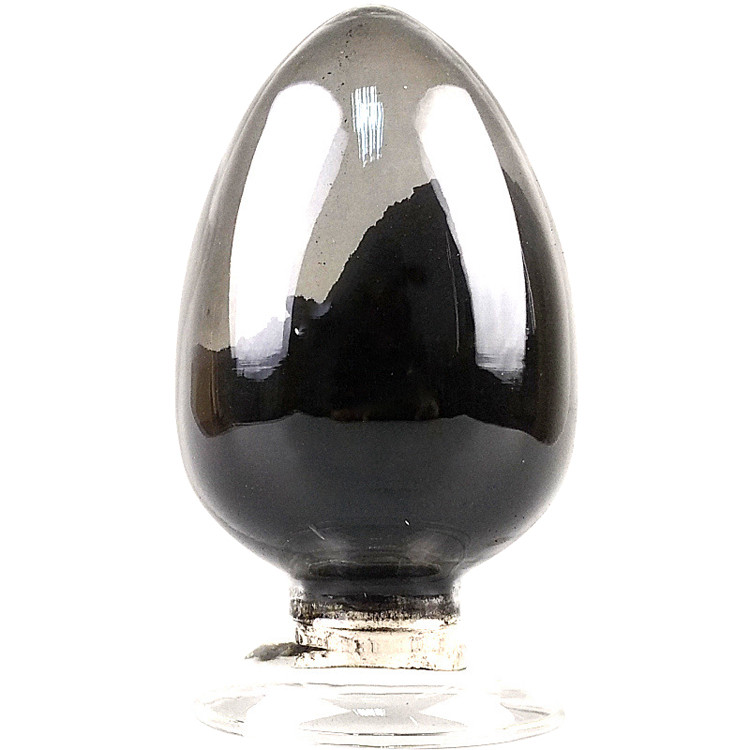Properties of Nano Cobalt Ferrite (CoFe2O4)
2024-06-15
Nano cobalt ferrite (CoFe2O4) is a type of ferrite nanoparticle that belongs to the spinel ferrite family. It exhibits unique magnetic and physical properties, making it valuable for various technological applications. Here’s an overview of nano cobalt ferrite (CoFe2O4), its properties, synthesis methods, and applications:
Properties of Nano Cobalt Ferrite (CoFe2O4)
1. Chemical Composition:
- Formula: CoFe2O4
- Structure: Spinel structure, where cobalt (Co) and iron (Fe) ions occupy specific crystallographic positions.
2. Magnetic Properties:
- High Saturation Magnetization: Nano cobalt ferrite exhibits strong magnetic properties, suitable for magnetic storage, sensors, and biomedical applications.
- Superparamagnetism: At nanoscale dimensions, these particles can display superparamagnetic behavior, useful in magnetic resonance imaging (MRI) contrast agents.
3. Size and Morphology:
- Nanoparticle Size: Typically ranges from a few nanometers to tens of nanometers in diameter.
- High Surface Area: Large surface area-to-volume ratio enhances reactivity and interaction with other materials.
4. Electrical Conductivity:
- Insulator or Semiconductor: Depending on doping and synthesis conditions, nano cobalt ferrite can exhibit electrical properties ranging from insulating to semiconducting behavior.
5. Thermal Stability:
- High Curie Temperature: The temperature at which magnetic materials lose their magnetization can vary depending on particle size and composition.
6. Chemical Stability:
- Oxidation Resistance: Shows good stability against oxidation, ensuring long-term performance in various environments.
Synthesis Methods
1. Chemical Co-Precipitation:
- Involves mixing aqueous solutions of cobalt and iron salts under controlled pH conditions, followed by precipitation and annealing to form nano-sized ferrite particles.
2. Sol-Gel Method:
- Precursors are dissolved in a solvent to form a gel, which is then dried and calcined to form crystalline nano cobalt ferrite.
3. Hydrothermal Synthesis:
- Utilizes high-temperature and high-pressure aqueous solutions to promote the formation of crystalline nanostructures of cobalt ferrite.
4. Co-Precipitation followed by Mechanical Milling:
- Combines chemical co-precipitation with mechanical milling to obtain finer particle sizes and enhanced homogeneity.
Applications of Nano Cobalt Ferrite (CoFe2O4)
1. Magnetic Recording Media:
- Used in hard disk drives (HDDs) and magnetic tapes due to their high coercivity and magnetization.
2. Biomedical Applications:
- MRI Contrast Agents: Due to their superparamagnetic behavior, nano cobalt ferrite particles can enhance MRI imaging contrast.
- Drug Delivery: Functionalized cobalt ferrite nanoparticles can be used for targeted drug delivery in cancer therapy.
3. Environmental Remediation:
- Water Purification: Nano cobalt ferrite nanoparticles are effective adsorbents for removing heavy metals and organic pollutants from water.
4. Catalysis:
- Utilized as catalysts in chemical reactions due to their high surface area and unique electronic properties.
5. Electromagnetic Wave Absorption:
- Used in radar-absorbing materials (RAMs) and electromagnetic shielding due to their magnetic and dielectric properties.
6. Sensors:
- Integrated into gas sensors and biosensors for detecting gases and biomolecules due to their sensitivity and selectivity.
Challenges and Considerations
1. Size Control: Achieving uniform particle size distribution and controlling agglomeration during synthesis is crucial for optimizing properties and applications.
2. Biocompatibility: For biomedical applications, ensuring the biocompatibility and toxicity profile of nano cobalt ferrite particles is essential.
3. Scalability: Scaling up synthesis methods while maintaining consistent particle properties and performance remains a challenge.
Future Directions
Research and development in nano cobalt ferrite (CoFe2O4) continue to focus on enhancing magnetic properties, exploring new synthesis methods, and expanding applications in emerging fields such as nanomedicine, environmental science, and telecommunications. Advances in nanotechnology and material science are expected to drive innovations in utilizing these versatile nanoparticles for various technological solutions.



